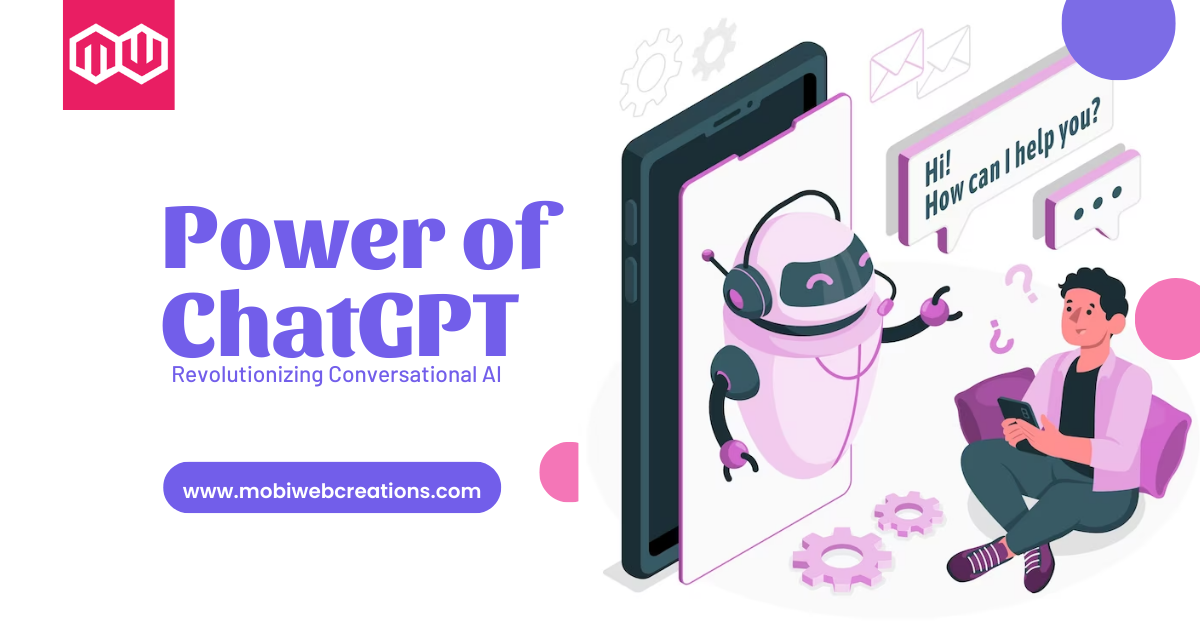Unleashing ChatGPT’s Potential: Revolutionising Conversational AI
Introduction:
In the ever-evolving landscape of artificial intelligence, ChatGPT has emerged as a groundbreaking technology, captivating users with its ability to engage in dynamic and human-like conversations. Developed by OpenAI, ChatGPT is an advanced language model based on the GPT-3.5 architecture, and it represents a significant leap forward in the field of conversational AI. This blog post will delve into the remarkable capabilities of ChatGPT and explore how it has revolutionized the way we interact with AI.

1. The Evolution of Conversational AI:
Conversational AI has come a long way, from early chatbots with limited responses to sophisticated language models like ChatGPT. Powered by deep learning algorithms and massive amounts of training data, ChatGPT has surpassed its predecessors in understanding context, generating coherent responses, and providing meaningful interactions. Its advancements have brought us closer to bridging the gap between human and machine communication.
2. Understanding Natural Language:
One of the most remarkable features of ChatGPT is its ability to comprehend and respond to natural language queries. Through pre-training on a diverse range of internet text, it has developed a comprehensive understanding of grammar, syntax, and semantics. This enables ChatGPT to generate responses that are contextually relevant and linguistically accurate, making conversations with the model feel remarkably human-like.
3. Dynamic and Contextual Conversations:
Unlike traditional chatbots that follow rigid rule-based systems, ChatGPT excels in dynamic and context-aware conversations. It can maintain context over extended interactions, allowing users to have meaningful discussions on a wide range of topics. Whether it’s discussing the latest news, answering complex questions, or engaging in creative storytelling, ChatGPT adapts to the conversation’s flow, providing an immersive experience.
4. Personalization and Customization:
OpenAI has made significant strides in enhancing the personalization capabilities of ChatGPT. Users can provide instructions or context at the beginning of a conversation, guiding the model’s responses towards a specific tone, style, or objective. This level of customization empowers users to have tailored interactions and helps businesses integrate ChatGPT seamlessly into their customer support systems or virtual assistants.
5. The Ethical Considerations:
As with any advanced AI technology, ChatGPT raises ethical concerns. OpenAI has actively taken steps to mitigate potential risks, introducing safety measures to avoid biased or harmful outputs. User feedback plays a crucial role in improving the model’s performance and addressing any biases that may emerge. Striking a balance between innovation and ethical responsibility is a continuous endeavor for both the developers and the AI community as a whole.
Conclusion:
ChatGPT has ushered in a new era of conversational AI, captivating users with its remarkable language generation capabilities. Its ability to understand natural language, engage in dynamic conversations, and adapt to user instructions has elevated the AI experience to unprecedented levels. As OpenAI continues to refine and develop ChatGPT, we can expect even more impressive advancements in the field of conversational AI. With responsible development and ethical considerations at the forefront, ChatGPT has the potential to transform industries, enhance customer experiences, and shape the future of human-machine interactions.
